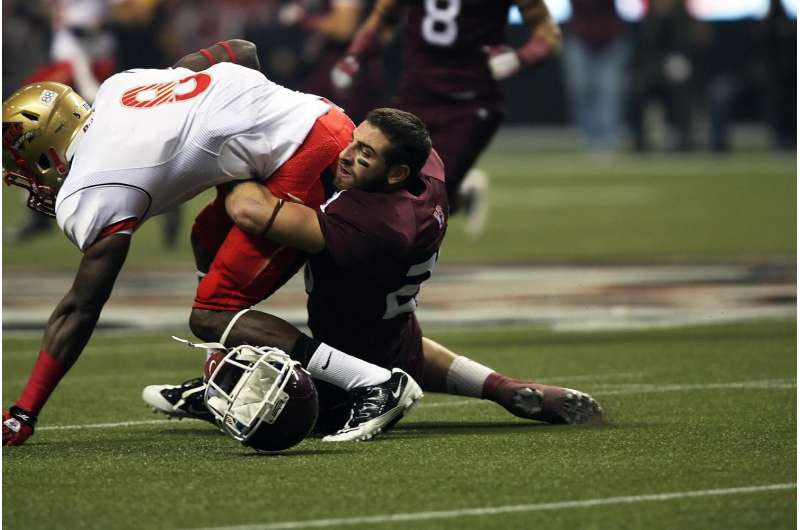
Two research professors at George Mason University, in collaboration with global partners, have discovered the same protein biomarkers in the saliva of youth and collegiate athletes who have experienced concussive and sub-concussive impacts.
The findings, if validated in larger, independent studies, could be used to develop a new, rapid, noninvasive, saliva-based test for concussion diagnosis and management, as well as a way to monitor changes to the brain following exposure to repetitive sub-concussive impacts.
The study, conducted by Mason professor of athletic training Shane Caswell and University Professor Emanuel Petricoin, was recently published in the Journal of Neurotrauma.
“Salivary biomarker research can, hopefully, enhance already existing tools that diagnose concussions, as well as track brain health over time,” said Caswell, one of the study’s lead researchers and executive director of Mason’s Sports Medicine Assessment, Research, and Testing (SMART) Laboratory. “This is valuable, not only in all levels of sports, but also in military settings.”
Concussion and repeated sub-concussive impacts, which are blows to the head that do not produce immediate symptoms, could have long-term adverse health consequences if athletes return to contact activity too soon.
Concussion management currently relies on subjective measures to inform clinical judgement. New strides have been made recently, such as a handheld blood test developed by Abbott Laboratories to diagnose concussions. But there continues to be limited understanding of how repeated sub-concussive impacts, that frequently do not cause concussion symptoms, affect the brain.
“There is a need for nonsubjective, diagnostic measures to be able to assess someone’s traumatic brain injury level, either in a concussed or sub-concussed state,” said Petricoin, co-director of Mason’s Center for Applied Proteomics and Molecular Medicine (CAPMM). “This is important for health care providers so that they can make accurate medical judgements.”
Mason’s research identified antibodies in saliva that target proteins such as HTR1A, SRRM4, and FAS, which are known to play a role in brain physiology and function. Their presence correlates with concussions and how many hits and athlete sustained during a season of play.
Compared to healthy athletes, individuals who were diagnosed with a concussion, or who suffered high exposure to sub-concussive impacts, showed an elevation of the same salivary biomarkers.
The research team worked with youth, high school, and collegiate athletic teams and their medical staffs across the Washington, D.C., metropolitan area, to collect saliva to create a Sport-Related Head Trauma Salivary Biobank. This first-of-its-kind biobank contains saliva collected from healthy athletes, athletes diagnosed with concussions, and athletes who sustained repetitive sub-concussive impacts.
Sensors worn by the athletes measured the number and severity of hits. Collected saliva was tested using a Mason-developed nanoparticle technology. Analysis was completed by researchers at the KTH Royal Institute of Technology in Stockholm, Sweden, which is a leader in the world of autoimmunity research.
Source: Read Full Article
